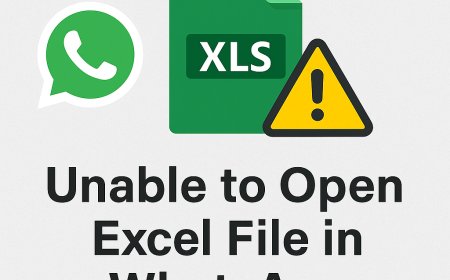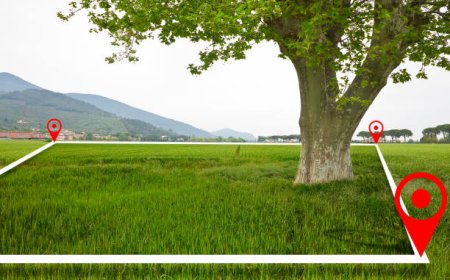How Fisheries Use Tag Reader to Manage Stocking Programs
Discover how modern fisheries use tag reader technology to track, assess, and improve fish stocking programs for better sustainability and yield.
Fish Stocking Isnt Guesswork Anymore
Fish stocking the practice of breeding and releasing fish into lakes, rivers, and reservoirs is a critical tool in both conservation and commercial fisheries management. But in 2025, its not just about dumping fingerlings into the water and hoping for the best. Its about strategy, data, and long-term sustainability.
To make smarter decisions, fisheries around the world are turning to a game-changing technology: the tag reader.
What Is a Tag Reader?
This is a device that detects tiny PIT (Passive Integrated Transponder) tags implanted in fish. These tags, usually no bigger than a grain of rice, contain a unique code that can be read by the device as the fish swims nearby.
When paired with PIT tagging, it lets fisheries track individual fish not just species or batches. That means they can measure survival rates, migration behavior, growth performance, and harvest returns with precision.
Its non-invasive, cost-effective, and incredibly powerful for long-term monitoring.
Why Fisheries Are Embracing Tag Reader Technology
Traditionally, fish stocking was based on assumptions: how many fish to release, where to release them, and when. But without reliable tracking, outcomes were hard to measure. Did the fish survive? Did they return to spawn? Were they caught by anglers?
Now, a tag reader fills that data gap. Heres how its transforming stocking programs:
1. Stocking Effectiveness
By tagging a sample of released fish and placing this reader stations in strategic locations (e.g., dams, tributaries, hatcheries), fisheries can directly measure how many fish survive and return. This helps determine which stocking strategies work best.
2. Species-Specific Tracking
Not all species respond the same way to stocking. Some thrive; others struggle. A tag reader allows managers to compare results across species and tailor efforts accordingly.
3. Genetic and Ecological Balance
Overstocking can damage native populations and reduce biodiversity. Using this reader data, fisheries can balance hatchery-raised stock with wild fish dynamics ensuring long-term ecosystem health.
4. Measuring Harvest Return Rates
In recreational or commercial fisheries, understanding which fish are being caught is crucial. Tagging helps track stocked fish that end up in creels or nets, offering insights into the economic return on investment.
Real-World Use Cases
Pacific Northwest Salmon Programs
In Washington and Oregon, thousands of Chinook and Coho salmon are tagged before release. This reader systems installed at dams and fish ladders provide real-time data on their migration and return rates.
Thanks to this technology, fishery biologists have been able to fine-tune release timing, improve hatchery practices, and increase adult return rates.
Walleye Stocking in the Great Lakes
Agencies like the Michigan DNR use PIT tagging combined with this reader arrays to monitor stocked walleye populations in Lake Huron. The data helps determine which rivers offer the best survival chances and where to avoid stocking altogether.
Conservation Hatcheries for Endangered Species
For endangered fish like pallid sturgeon or razorback sucker, every released individual counts. By tagging juveniles and using this reader detection points, conservation programs can ensure their survival and evaluate habitat preferences.
From Data to Decisions
When fisheries get tagging data, they dont just log it they act on it. A well-placed reader station can provide:
-
Survival Rates: How many fish from each batch return as adults?
-
Migration Timing: When are fish moving, and through which corridors?
-
Growth Patterns: Are stocked fish growing at the expected rate?
-
Harvest Pressure: Where and when are tagged fish being caught?
All this leads to data-driven decision-making. Stocking plans can now be optimized based on science, not speculation.
How Tag Reader Systems Are Set Up
Depending on the environment, this reader systems vary in scale and complexity. Common setups include:
-
Antenna Arrays in Rivers: Designed to detect fish as they pass upstream or downstream. Used widely for migratory species.
-
Portable Tag Reader Units: Handheld devices used during fish handling, hatchery operations, or field surveys.
-
Pond or Hatchery Detection Loops: For internal tracking before fish are released.
Modern systems can store thousands of detections and upload data via USB or in real time to cloud platforms. With solar panels or waterproof casings, they can operate in remote conditions with minimal maintenance.
Ensuring Tagging Doesnt Harm Fish
A frequent concern is whether tagging affects fish health. The good news? PIT tags are widely proven to be safe and minimally invasive. Theyre injected just under the skin using sterile equipment and dont interfere with natural behavior or survival.
Research from NOAA and the U.S. Fish & Wildlife Service shows that PIT-tagged fish often perform just as well, if not better, than untagged cohorts, especially when released in appropriate environmental conditions.
Innovation on the Horizon
This reader technology is evolving quickly. Future advancements include:
-
AI-powered Detection: Using machine learning to predict fish movement or detect environmental threats.
-
Integrated Sensors: Measuring water temperature, salinity, or dissolved oxygen alongside detections.
-
Drone-based Scanning: Emerging field units mounted on UAVs to scan shallow waters or inaccessible zones.
These innovations are set to make fish stocking even smarter and more responsive in the coming years.
E-A-T Backed Insights
This article draws on case studies from NOAA Fisheries, the U.S. Geological Survey (USGS), and leading hatchery programs globally. The benefits of PIT tagging and tag reader use are documented in peer-reviewed fisheries journals, ensuring this content is both accurate and trustworthy.
Final Thoughts
The days of stocking and hoping are over. Thanks to tag reader technology, fisheries now have a clear window into what happens after release. From tracking juvenile survival to managing adult returns, the insights delivered by a reader are reshaping fish stocking around the world.
Whether you're managing a state hatchery, restoring endangered fish, or supporting a sportfishing economy, investing in a quality reader system isnt just smart its essential.
FAQs
Q1: How much does a tag reader system cost?
It depends on the size and features. Basic handheld readers start around $1,000, while large river arrays can cost $10,000$50,000 or more.
Q2: What size fish can be tagged?
Fish as small as 50mm can be tagged safely with miniature PIT tags.
Q3: Is it legal to tag and release fish in public waters?
Yes, with the appropriate permits and following your local fisheries regulations.


































